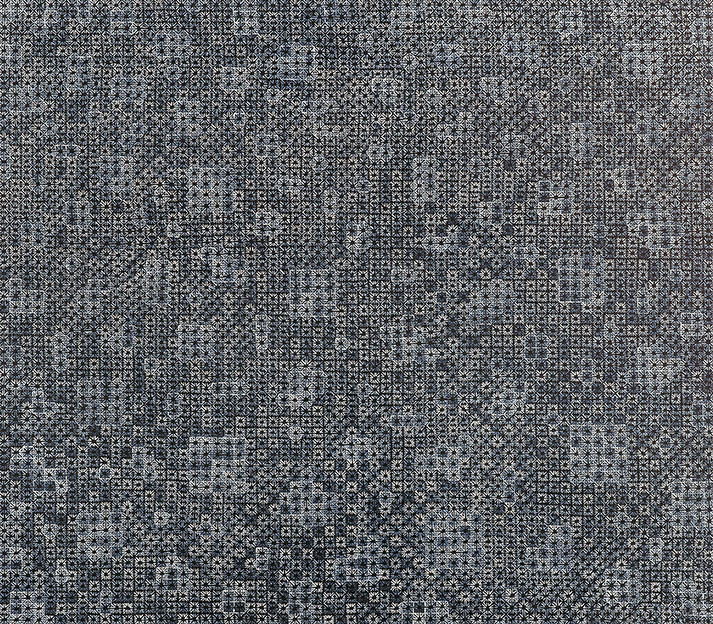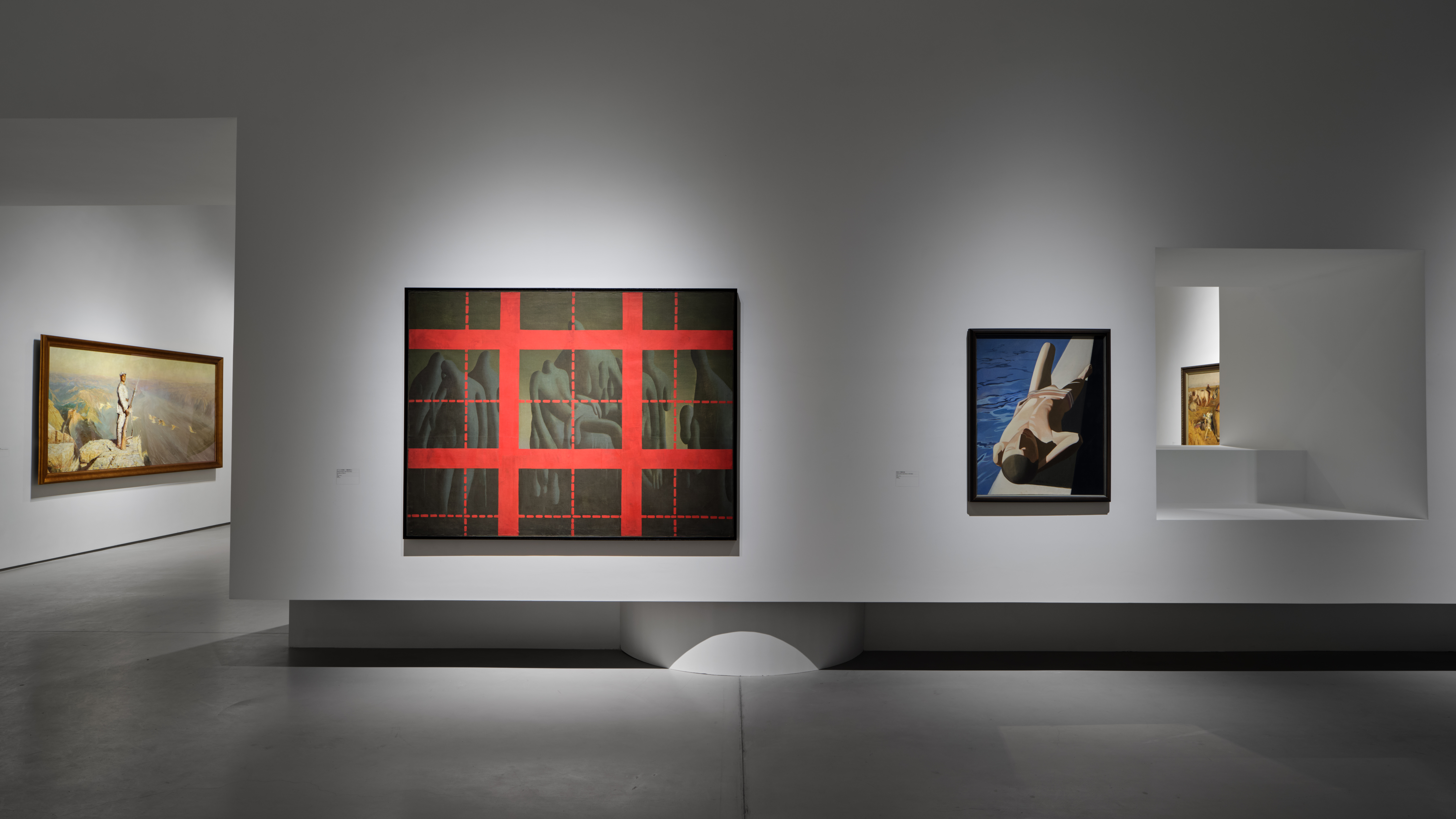
Ding Yi
Appearance of Crosses 93-1
1993
Acrylic on canvas
At that time I was thinking about two problems. One was the problem of how to break through the popular forms of expression, and the other was the problem of transforming my inner energy. The possibility of breaking through was to make art no longer resemble art, by filtering out all the technical skills, narrative and painterly qualities. The coordinates of the cross-shape [the Chinese character for ‘ten’, “十”] that is the most familiar printed logo in my work became my symbol. People often ask me what it signifies. In fact, in my paintings it does not signify anything.
(Statements by the Artist, 1997)
[In his early period – Editor] Ding Yi used a ruler and adhesive tape and similar symbolic mechanical and repetitive painting formats, and the clean and smooth industrial effect of acrylic at least until the exciting work No.91-1, he successfully reduced the painterly quality in his works. His tools and his forms blocked the personal feelings out of his works, his works maintained a limited, almost regulated space, and they rather effectively eliminated meaning.
In 1993 Ding Yi made an important decision to let his paintings enter a freer state. Once both his hands were liberated, the peak of his painting followed. Freehand painting allowed his paintings to enter their midsummer like fertile fields, presenting a rich, lush state, and a booming prospect. By June 1993, when he exhibited his three black and white paintings in the Venice Biennale, his peak was still continuing. In this period, his works showed just the right combination of the regulation and coldness of his previous mechanical period and the passion and tension of his new method. They were full and powerful, both opening the way for art’s stepping forward, and attracting the eye of the public.
(Xiao Kaiyu, An Artist Constantly Going towards the Obverse:Ding Yi, 1997 [Extract])


